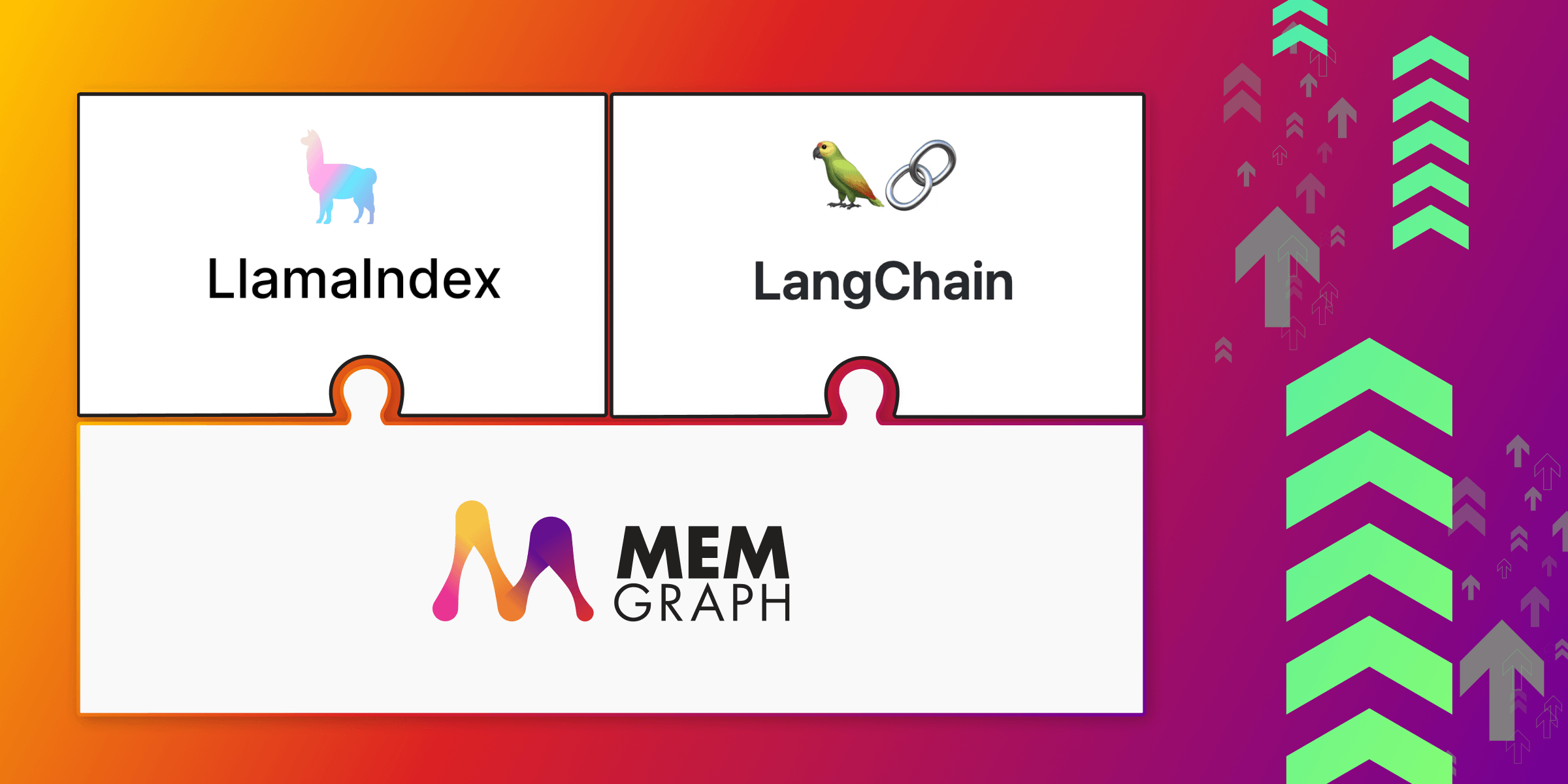
Improved Knowledge Graph Creation with LangChain and LlamaIndex
We’re excited to share the latest updates to Memgraph’s integrations with LangChain and LlamaIndex, two frameworks that make it easier than ever to create, manage, and query knowledge graphs (KGs) from unstructured data.
These integrations are vital for building advanced Graph Retrieval-Augmented Generation (GraphRAG) solutions, where knowledge graphs provide the structure and context to make large language models (LLMs) smarter and more effective.
What’s New with LangChain
The updated LangChain integration offers:
- Knowledge Graph Creation. Transform unstructured text into structured KGs and seamlessly store them in Memgraph.
- Natural Language Querying. Interact with your knowledge graph through LangChain’s APIs, extracting meaningful insights in plain English.
This integration refines the underlying implementation, enhancing workflows like GraphRAG for a smoother user experience.
Learn more:
LlamaIndex: Taking Knowledge Graph Creation Further
LlamaIndex’s integration with Memgraph brings added flexibility:
- Dynamic schema extraction. Automatically generate or define schemas for entities and relationships using LLMs.
- Enhanced querying. Retrieve and explore labeled property graphs through various retrieval methods, optimized for LLM use.
Learn more:
- Constructing a Knowledge Graph with LlamaIndex and Memgraph
- Integrating Memgraph with LlamaIndex Building GenAI Apps
Why It Matters
LangChain and LlamaIndex are frameworks designed to improve large language models (LLMs) by integrating external knowledge, enabling them to process and reason over structured data, like that in a graph database such as Memgraph. Here's a simplified breakdown of their roles and how they intersect with graph databases for knowledge creation:
LangChain
LangChain is primarily focused on building applications that use LLMs in a modular and composable way. It enables LLMs to interface with external tools, APIs, and databases. It allows you to create pipelines where structured knowledge (like that stored in a graph database) is used alongside LLM capabilities.
How does it relate to Memgraph?
- LangChain acts as a bridge between Memgraph and an LLM.
- You can define workflows where the LLM queries Memgraph for specific data (e.g., graph traversals or shortest paths) using Cypher or APIs, processes the results, and generates natural language explanations.
- It supports GraphRAG, where Memgraph's integration with LangChain enables creating knowledge graphs from unstructured data and querying them with natural language. This process allows the graph database to provide structured, contextual knowledge that LLMs can leverage to generate more relevant and insightful responses.
Imagine building a chatbot for network analysis. LangChain facilitates the LLM querying Memgraph for insights like "What is the most connected node in this fraud network?" and responding in natural language.
LlamaIndex
LlamaIndex specializes in indexing and retrieving external data sources for LLMs. It organizes unstructured or structured data into formats that are efficient for LLM processing. For graph databases like Memgraph, LlamaIndex can play a critical role in extracting and presenting relevant graph data to the LLM.
How it relates to Memgraph?
- LlamaIndex can connect to Memgraph to extract data from the graph, index it, and optimize it for LLM queries.
- It allows LLMs to perform knowledge retrieval tasks, where graph data is used as the knowledge base for answering queries or generating insights.
- Supports multi-hop reasoning by extracting and summarizing connections between graph nodes.
- For a knowledge graph containing patient data, LlamaIndex can organize Memgraph's graph data into a format that an LLM can query to answer complex medical questions, such as "Which patients are at risk based on their medical history and social connections?"
How Memgraph Enhances GenAI Applications
If Memgraph is your solution for building GenAI applications, with seamless integrations for LangChain and LlamaIndex, it’s easier than ever to turn unstructured data into structured knowledge. What you get is:
- Enhance your GraphRAG workflows with smarter, more contextual AI,
- Build scalable knowledge graphs that unlock multi-hop reasoning and elevate the capabilities of LLMs,
- Enable intuitive, natural language querying to extract domain-specific insights without breaking a sweat.
Next Steps and Further Reading
If you are building GenAI apps with GraphRAG and are looking to find out more about the smart knowledge retrieval, here are some useful resources: